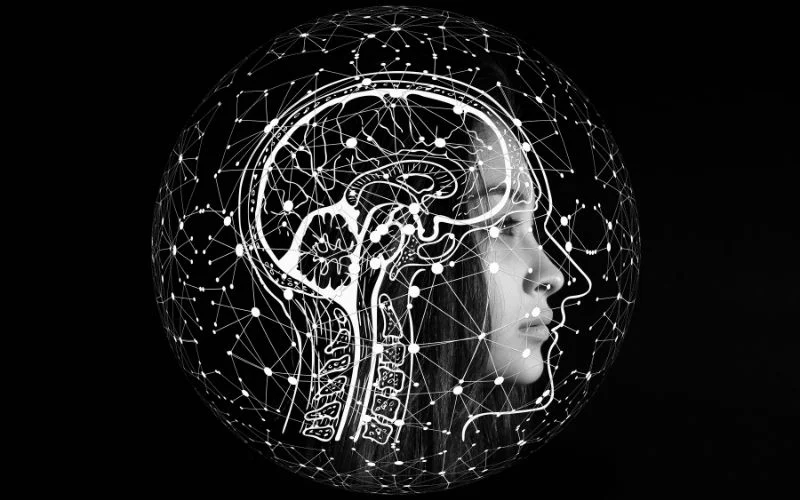Our many astonishing technological innovations, scientific discoveries, social institutions, cultural and artistic achievements, among other astonishing achievements, prove unequivocally that the human brain is indeed a very complex and extremely capable organ.
{getToc} $title={Table of Contents}
This has allowed us, over the centuries, to turn rocks and trees into houses, glass into lenses through which to look at stars or microbes, build cities and nations from scratch, create masterpieces of the visual, literary, performing and other arts, and study the past and present by imagining many possible futures. What's more, the brain links all these businesses and makes them available to everyone around the world and across time.
Top 10 Interesting Little Known Facts About Human Brain
It is an amazing organ that we still have a lot to learn about. These 10 Bizarre, Little-Known Facts About The Human Brain May Remind Us Just How Amazing And Wonderful The Center Of Our Nervous System Really Is.
10. The brain runs hot
Studies have shown that, like mechanical devices, the human brain heats up during operation, its temperature rises to 40 ° C, as opposed to 36.6 ° C of the rest of the body. While this temperature indicates that the brain is healthy, unusual heat signatures may indicate "brain damage or disorder."
Four-dimensional maps of brain temperature during the day show that women's brains are slightly warmer than men's, possibly due to the menstrual cycle. The study found that daily fluctuations in brain temperature for both women and men averaged within 1°C with cooler temperatures in the "outer parts of the brain". The brain is cooler at night and warmer during the day, while the brains of older people tend to get hotter than those of younger people. The study offers potential opportunities for diagnosing and treating brain damage or disorders.
9. Particles Can Damage Your Brain
According to an online article, the researchers concluded that inhaled ultra-fine particles of toxic air pollution can travel from the lungs to the bloodstream, invade the brain and its tissues, where the particles can stay longer than in any other organ.
The point of entry appears to be the blood-brain barrier, which Harvard Medical School describes as "the physical separation between the brain and the circulatory system that normally only allows small, important molecules such as oxygen and glucose to pass."
The researchers found this possibility worrisome, as such invasive particles, which include calcium, iron, malayaite, and titanium dioxide in anatase, can cause neuroinflammation and severe cognitive decline.
8. Some Brains Can't 'Read' Faces
Facial agnosia, or prosopagnosia, is a neurological disorder characterized by an inability to recognize familiar faces. Although those who suffer from this condition are aware that they are seeing a face, they cannot tell whose face they are seeing, sometimes even if it is the face of a family member or themselves.
If we talk about celebrities, the famous actor Brad Pitt suffers from this disease. He says people often don't believe he can't identify their faces. Hence, they consider him "impolite, selfish and conceited". As a result, from a young age, he always felt very lonely.
This condition often affects people from birth. While the sufferer may feel lonely, this is not the case - according to the National Health Service - one in 50 people suffers from prosopagnosia, which can be caused by "abnormalities in a part of the brain called the fusiform gyrus."
7. The brain can be "reprogrammed" (probably)
Is it possible, so to speak, to reprogram the brain? There seems to be an answer. Psilocybin mushrooms may be a treatment for major depressive disorders, which often do not respond to conventional treatment. The US Food and Drug Administration calls psilocybin a potential breakthrough therapy.*
Once the gut converts the substance into psilocin, a chemical with psychoactive properties, it can be used to treat a variety of conditions, including cluster headaches, anxiety, anorexia, obsessive-compulsive disorder, as well as various forms of substance abuse and post-traumatic stress disorder.
Psilocybin can break the compulsive influence that self-critical and negative, anxious or fearful thoughts have on depressed people. This allows for more flexible thinking and, the researchers say, allows brain neurons to develop new dendrites, which facilitates communication between brain cells and, in turn, creates and strengthens new circuits in the brain. However, Matthew Johnson, professor of psychedelics and consciousness at Johns Hopkins University, warns that "psychedelics don't work for everyone."
6. Modern life changes the brain
The stress and demands of modern life can be detrimental to the prefrontal cortex, causing "frontal fatigue," a condition that makes people more vulnerable to mental illness. One doctor suggests a three-step treatment plan to reduce stress and restore balance in life.
First, recognize the signs of frontal fatigue: difficulty maintaining attention, forgetting words and trifles, difficulty completing multiple tasks, and venting irritability or emotion.
Dr. Rego suggests doing practical activities such as making crafts, cooking, making art, playing musical instruments, gardening. It is also recommended to indulge the senses in the pursuit of aesthetics: “Look, smell, listen and taste what life has to offer.”
Explore new products, art, music and especially nature. Social interaction is also recommended: “Talk, ask, say hello or connect with others – and not only with those who are close to you, but also with people you see, work with, walk by and wait in line.”
The third recommended strategy for relieving frontal fatigue is to better manage your thoughts and feelings by engaging in meditation or entertainment, reading difficult books, and working on becoming less and less irritable. In addition, Rego instructs to disconnect from technology and social networks whenever possible.
5. The brain compresses data
In order to work efficiently, the human brain ignores unnecessary data, focusing solely on the information relevant to whatever task it is currently performing. According to neuroscientists, the brain uses tunnel vision, or maximizes performance at minimal cost through data compression.
As a result of research led in particular by researchers Christian Mahens and Joe Paton, these principles may provide a guide for future research on how the mental constructions of the world can support intelligent behavior in the context of life sciences, artificial intelligence, and decision making.
4. Einstein's brain had some unusual features
Black-and-white post-mortem photographs and brain tissue samples of Albert Einstein, as well as autopsy results, showed not only typical characteristics, but also several unusual features.
His brain showed all the changes that come with aging, and two parts of his brain contained an unusually large number of non-nerve cells called glia per neuron, but the parietal lobe of a genius lacked a groove and a structure called an operculum. It is thought that the missing sulcus may have "enhanced connections in this area", which is thought to be related to visuospatial function and math skills.
Another striking feature of Einstein's brain is the complexity and structure of the gyri in certain parts of the cerebral cortex, which increased the surface area of the region and could contribute to his remarkable abilities, aiding his thought experiments on the nature of space and time.
One of the facts about the theoretical physicist that may be particularly surprising to many is the fact that Einstein's brain was actually smaller than average.
3. The brain cells of some animals are similar (to some extent) to ours.
There is no doubt about the von Economo neuron. Named after the anatomist Constantin von Economo, it is large and distinctive in appearance, and it is found in the brains of both humans and animals. Well, in the brains of some animals, mostly larger ones like apes, whales, dolphins, cows and elephants.
Scientists suggest that this neuron evolved independently in animals with large brains or especially in social animals. It is absent in people with some brain diseases, and in older people who do not experience standard memory loss with aging, it is too much.
Apart from these few facts, not much is known about neurons because animals commonly used in laboratory experiments, such as rats and mice, do not have them. It is safe to say that further research will be carried out on a large neuron.
2. The brain loves surprises.
MRI scans of the human brain show that humans are programmed to enjoy the unexpected. Surprises, in particular, elicit a strong reaction from the nucleus accumbens, also known as the "pleasure center of the brain."
As an assistant professor of psychiatry at Emory University in Atlanta explained, birthday gifts are nice, but gifts received on other days are better because they are unexpected. Surprises, when they are pleasant, trigger a dopamine rush that lights up the nucleus accumbens like a Christmas tree, according to an assistant professor of neuroscience at Baylor College of Medicine in Houston.
1. The brain reacts to horror movies
Perhaps unsurprisingly, neuroimaging shows that the brain also responds to horror films, especially when such films are based on a shocking or terrifying event rather than scare the audience. However, there is no influx of dopamine. Instead, areas of the brain associated with visual and auditory processing become more active when anxiety slowly builds up while watching. After this moment, a lot happens in the brain, as areas associated with the processing of emotions, threat assessment and decision making are activated.
In every film, the main characters (and often other characters) experience conflict as they face threats to their safety, if not danger to their very existence. However, horror films are superior to other genres of cinema in that they raise the stakes - they contain some kind of "superhuman or supernatural threat that cannot be reasoned with or easily fought." The researchers found that horror film viewers are looking for an excuse for company to watch scary movies together rather than alone.
Real-life-inspired psychological horror scares audiences the most, and test subjects were most frightened by implied or invisible threats rather than concrete and visible ones. In other words, the creeping apprehension of fear that occurs when a person feels something is not quite normal scares most viewers more than a screamer that makes us jump in a chair.
In one study, subjects watched horror movies while inside an MRI scanner that measured the activity of their neurons. The results showed that as their anxiety slowly increased, their brains became more active, looking for environmental cues.
On the other hand, the introduction of sudden and unexpected shocks stimulated areas of the brain associated with emotion processing, threat assessment, and decision making, allowing for rapid response to stimuli. However, the latter parts of the brain remain in constant communication with the former to make it easier to respond to perceived threats.
Note: * The author of the article in no way endorses, much less encourages the use of prohibited substances, this information only reflects the results of certain unverified scientific studies. Remember: DRUGS ARE EVIL (any). *





.jpg)



%20to%20ours.jpg)

